
Mahabharat, a 21st century perspective
- Ranee Kumar
e-mail: Ranee@journalist.com
November 17, 2015
The canvas is almost cosmic; the characters are multi-dimensional; the
epoch war is depicted as enormous by Veda Vyasa, the most authentic
source of Mahabharata (Itihaas). To interpret all of these
from a 21st century perspective on stage through dance and drama within a
stipulated time cycle is no cake walk. Choreographer Shama Bhate,
Kathak exponent and guru, executed a very viewable theatre
presentation, Ateet ki Parchhaiyan which in a nutshell is
'Mahabharat reinterpreted,' applying as many technicalities as are at
our disposal today; digitalized backdrops, evocative lighting, not to
talk of classical stage craft like soliloquy and teichoscopy. The
theme was of epic proportions hence the convergence of seven dance
styles was justifiable.
View Slide show
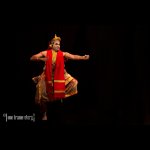

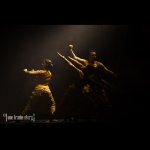

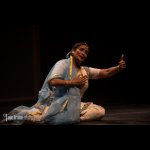
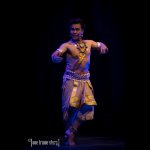
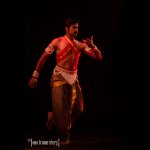
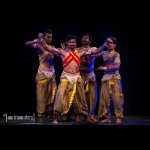
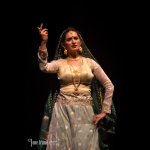
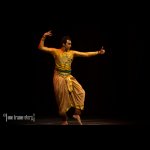
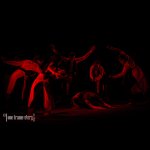
The narrative is unique in the sense it deals with the conscience of
crucial characters (dramatis personae) in the aftermath of perhaps one
of the earliest, gory war of Kurukshetra in this land. It defies
popular expectation by omitting Lord Krishna, Arjuna, Bheema and others;
instead focuses on Kunti, Gandhari, Draupadi, Karna, Bheeshma,
Yudhishtira and of course Duryodhana. There are no dialogues, only
voice-overs, song, music and mime, which goes without saying that the
characters come on stage to soliloquy which for most part is
self-depreciatory. Simply put each of them develops a hind sight and is
repentant for his/her past actions in a given period of time. Sole
royal survivors of a devastating family war, entirely disillusioned by
the turn of events that leaves no direct progeny to the throne, these
veterans mull over their fate, follies and foibles. As they recreate
each of the circumstances in their mind's eye, the audience is allowed a
silhouetted glimpse of certain landmark events that led to a crucial
change in their individual lives through teichoscopy technique which
indeed was a beautiful tool to narrate in a nutshell and keep the flow
of this otherwise voluminous epic story.
The famed dice game and consequent Draupadi disrobing episode does not
occur in succession. Instead, the frame freezes with the victory of
Duryodhana over Yudhishtara who pawns his properties and then his
brothers and his queen Draupadi who comes on stage in a shell-shocked
condition. Again this crucial incident is recounted by Yudhishtara
in solo as he atones for his sins/weaknesses and again by a unforgiving
Draupadi who soliloquies on her being disrobed under public gaze!
Though not repetitive, but admittedly vital reason for the entire
conflict, the back and forth operation over this incident did not move a
21st century mind as it was supposed to. So was the Draupadi
swayamvar recap, enacted with great detail which did not gel with the
philosophical tone and tenor of the present drama. There was
nothing Odissi, not even a stance, about Ramli Ibrahim
(Yudhishtara) and his troupe's dance except a vestige of a
costume. Of Kunti and Gandhari, the latter comes out as a woman of
mettle despite blind-folding herself while the former emerges as a
'scheming' mother who tries to emotionally blackmail her sons (from a
21st century gaze of course) as and when it suits her. Vyjayanthi Kashi
portrayed Kunti under the Kuchipudi dance form but there was hardly any
scope for her to showcase, except while reminiscing her youth where she
tried to justify her dancing abilities. Her mime as rues the loss of
grand heirs and goes down memory lane was well expressed through facial
and hasthabhinaya.
Gopika Varma relived Gandhari through Mohiniattam with beatific grace
and expressive abhinaya. Her agony over her child bearing, her own
obstinacy to keep her vision closed to her sons' vile nature carried a
realistic import than the rest of the characters. The Chhau dancer
Rakesh Saibabu as Duryodhana with his troupe was the highlight of the
evening both in terms of dance and action. The movements were far too
fantastic and the agile dancer looked and acted with conviction. Kathak
dancer Ameera Patankar as Draupadi had a larger role than the rest and
executed it with aplomb. She never let go her character's never-say-die
attitude even in the face of all her sons being annihilated. The only
repentance she shows was that she never tried to be a real mother and
was busy being a wife and potential queen. Ameera proved to be a
deft dancer too. In fact, Kathak took the cake as far as dance goes for
this presentation. Every change of scene and preludes were substituted
by the group of Kathak dancers who flitted across the stage with swift
footwork and converged whenever necessary for the actor on stage to
disappear giving way to another.
The only characters that were projected with certain foibles from the
director's end were Karna played by Bharatanatyam artiste Vaibhav Arekar
and group of three as also Bheeshma essayed by Dr. Kannan in Kathakali
format. For one, it was given to understand at the very beginning of the
presentation that the ethos was in the aftermath of the Kurukshetra
war. Then we find Karna on stage in a monologue; how come? He was
killed in the war, and so wounded that it is hard to believe that he
could recollect the turn of events and react to them. At the most, there
could be pain and blame in his eyes for being cheated and for ending as
a victim of fate. When the survivors referred to Karna, there was no
reason for this character to come on stage; the director could have
taken recourse to teichoscopy again. So too was the interpretation of
Bheeshma's character as he lies wounded. Despite poetic license,
one cannot unravel the mind of an epic persona ignoring history and
basic characteristics of the original etched by Veda Vyasa. Nothing
works when you try to distort the thinking process and make Bheeshma
guilty of inaction with regard to Pandavas. The grand sire's noble
qualities as enumerated by the composer tantamount to his being a
'stithapragna' (one who has surpassed the three gunas); he is as much a
karma yogi as Krishna, only in a different context. The thought
process put into Bheeshma was flawed and deserves a relook. All the
dramatis personae blaming Krishna in some way or the other even while
admitting to His divine supremacy was well conceived piece of artistry.
Kudos to Shama Bhate and Nad-Roop school of dance for an aesthetically
crisp and effective re-interpretation of the Mahabharata. Harshavardhan
Pathak's magic with lights and Narendra Bhide's music to the context and
genre enriched the texture of the dance drama.
Ranee Kumar, a journalist for the past two decades, has worked with
mainstream newspapers from Hyderabad. She later took to freelancing for
The Hindu in art and culture as their art critic. Ranee has many
articles, reviews in music, dance and drama published to her credit.
|





